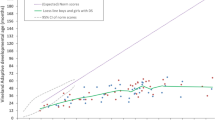Abstract
The psychosocial development of adolescents with visual impairment was studied in a group of 54 adolescents (40 boys, 14 girls) attending Finnish regular schools. Mean age was 14.0 (SD 0.87). The control group consisted of normally sighted adolescents of the same age level (N=385, 172 boys, 213 girls). Data were collected with self-report questionnaires. Results indicated that the adolescent group with visual impairment did not differ from the control group in the frequency of depression, distress symptoms or in their relations with parents and siblings. Adolescents with visual impairment less often had many friends and dates with other young people than those without visual impairment. They also reported more often feelings of loneliness and difficulties in making friends. Self-esteem, school achievement and social skills were lower in girls with visual impairment than in the control girls. In summary, our results showed that the psychosocial developmental outcomes of many adolescents with visual impairment were similar to their peers without visual impairment. However, some adolescents with visual impairment, especially girls, need more support in their psychosocial development.
Similar content being viewed by others
Author information
Authors and Affiliations
Additional information
Accepted: 15 May 1997
Rights and permissions
About this article
Cite this article
Huurre, T., Aro, H. Psychosocial development among adolescents with visual impairment. European Child & Adolescent Psychiatry 7, 73–78 (1998). https://doi.org/10.1007/s007870050050
Issue Date:
DOI: https://doi.org/10.1007/s007870050050




